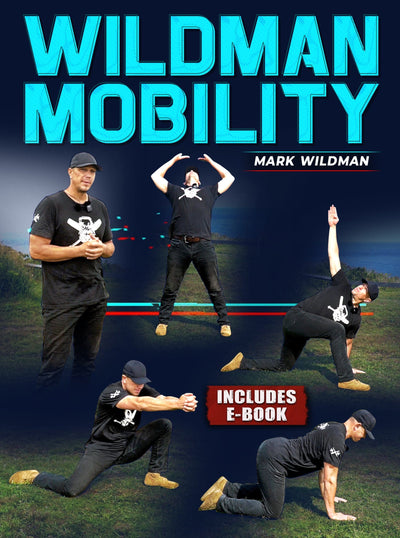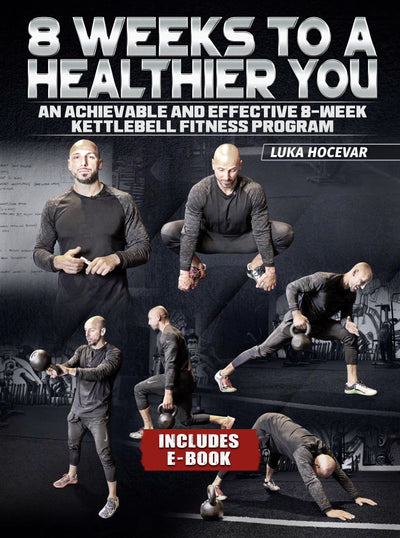Kettlebell Pullover
The kettlebell pullover is a dynamic and effective exercise that has gained popularity for its ability to target multiple major muscle groups, including the chest, back, and core. Derived from the traditional dumbbell pullover, this variation introduces the use of a kettlebell, adding an extra dimension of instability and requiring heightened control throughout the entire movement.
What this article covers:
- Kettlebell High Pull
- Pull-throughs and Kettlebell Swings
- Kettlebell Plank Pull Through
- Kettlebell Swing Push or Pull
When performing the kettlebell pullover, one starts by lying down on a bench or stable surface, with only the upper back and shoulders making contact. The hips and legs are positioned at a 90-degree angle, feet planted firmly on the ground. Grasping the kettlebell by its horns (the sides of the handle) with both hands, the exercise begins with the kettlebell held vertically above the chest.
The execution involves a deliberate and controlled lowering of the kettlebell in a sweeping arc-like trajectory toward the floor behind the head. Throughout this phase, the arms maintain a slight bend, enabling a deep stretch in the chest and engaging the latissimus dorsi muscles in the back. Importantly, the stability of the hips and lower body should be upheld, ensuring that the exercise primarily targets the upper body muscles.
From this lowered position, the movement is reversed, with the emphasis shifting to the pulling phase. By activating the core and engaging the latissimus dorsi and triceps, the kettlebell is maneuvered back along the same arc-like path to the starting position above the chest. The controlled nature of this exercise requires continuous engagement of various muscle groups, contributing to a comprehensive upper body workout.
The kettlebell pullover effectively engages several key muscle groups. The pectoralis major muscles are prominently activated during the downward motion, as the arms stretch and the chest muscles are engaged. Additionally, the latissimus dorsi, responsible for the pulling action, play a significant role in returning the kettlebell to the starting position. This exercise also involves the triceps muscles, aiding in the extension of the arms during the lifting phase. Furthermore, the core muscles are integral to maintaining stability in the hips and lower body, offering an element of overall body engagement.
Incorporating the kettlebell pullover into a workout routine offers a range of benefits. Firstly, it contributes to the development of the upper body by targeting both the chest and back muscles, fostering strength and definition. The exercise also stimulates core stability due to the necessity of stabilizing the lower body throughout the movement. Additionally, the kettlebell pullover encourages improved shoulder mobility and flexibility, as the controlled motion challenges the joint's range of motion.
This exercise is not only effective for muscle development but also for enhancing functional strength. The sweeping movement pattern closely mimics actions often encountered in various sports and daily activities, translating to improved athleticism. For those accustomed to the traditional dumbbell pullover, transitioning to the kettlebell variation can inject novelty into the routine, potentially preventing plateaus in progress.
However, a word of caution is warranted. Proper form is crucial to prevent strain on the shoulders, lower back, or neck. Beginners should commence with a lighter kettlebell to grasp the movement intricacies before gradually increasing the weight. Individuals with pre-existing shoulder or back issues should seek guidance from a fitness professional or healthcare provider before undertaking this exercise.
Kettlebell High Pull
The kettlebell high pull is a dynamic and explosive exercise that involves pulling the kettlebell from a lowered position to chest level in a swift motion. This movement engages the posterior chain, including the glutes, hamstrings, and lower back, while also challenging cardiovascular endurance due to its high-intensity nature.
During the execution of the kettlebell high pull, muscles worked are particularly those in the posterior chain. The explosive pull recruits the glutes and hamstrings to drive the kettlebell's upward movement. Additionally, the lower back and core muscles play a significant role in stabilizing the spine and maintaining balance during the dynamic action. The shoulders and upper back are also involved in guiding the kettlebell's trajectory, contributing to an effective full-body workout.
Pull-throughs and Kettlebell Swings
Pull-throughs and kettlebell swings are exercises that focus on hip hinge movements and contribute to strengthening the glutes and hamstrings. Pull-throughs involve passing the kettlebell between the legs from a bent-over position, emphasizing hip extension upon standing. Kettlebell swings combine both push and pull elements; while the hips push the kettlebell forward, the upper body guides its trajectory, creating a dynamic synergy that engages the entire body.
Kettlebell Plank Pull Through
The kettlebell plank pull through is a fusion of core stability and full-body engagement. In this exercise, a kettlebell is placed beside you while in a plank position, and it's pulled across the body to the opposite side. This movement not only strengthens the core muscles but also recruits the lats, shoulders, and hip stabilizers for an integrated workout experience.
Kettlebell Swing Push or Pull
The distinction between kettlebell swing push or pull highlights the intricate coordination between different muscle groups. As the hips thrust forward, it generates the driving force for the kettlebell's movement, resembling a push action. However, the upper body's role in directing the kettlebell's path and controlling its momentum is akin to a pull. This duality showcases the harmonious interplay between muscle groups, resulting in a powerful and fluid movement.
Incorporating these various kettlebell exercises into a fitness routine offers a comprehensive approach to strength and functional training. Each exercise targets specific muscle groups while contributing to overall body coordination and conditioning. It's crucial to perform these exercises with proper form, gradually increasing intensity, and listening to your body to ensure a safe and effective workout experience.
In essence, the kettlebell pullover stands as a valuable compound exercise that delivers a comprehensive upper body workout. By prioritizing technique, safety, and gradual progression, enthusiasts can harness its benefits for muscle development, core stability, and enhanced functional strength.
Did you find the blog helpful? If so, consider checking out other guides:
- Kettlebell Pull Exercises
- Kettlebell Swing Squat
- Kettlebell Split Squat
- Overhead Squat with Kettlebells
- Double Kettlebell Squat
- Pistol Squat on Kettlebell
- Kettlebell Squat Clean
- Kettlebell Squats Muscles Worked
- Hack Squat Kettlebell
- Kettlebell Squat Variations
- The Kettlebell Rack Squat
- 20 Minute Kettlebell Workout
- 15 Minute Kettlebell Workout
- 5 Minute Kettlebell Workout
- 45 Minute Kettlebell Workout





